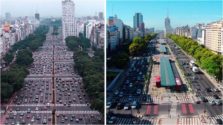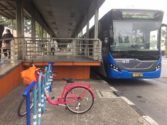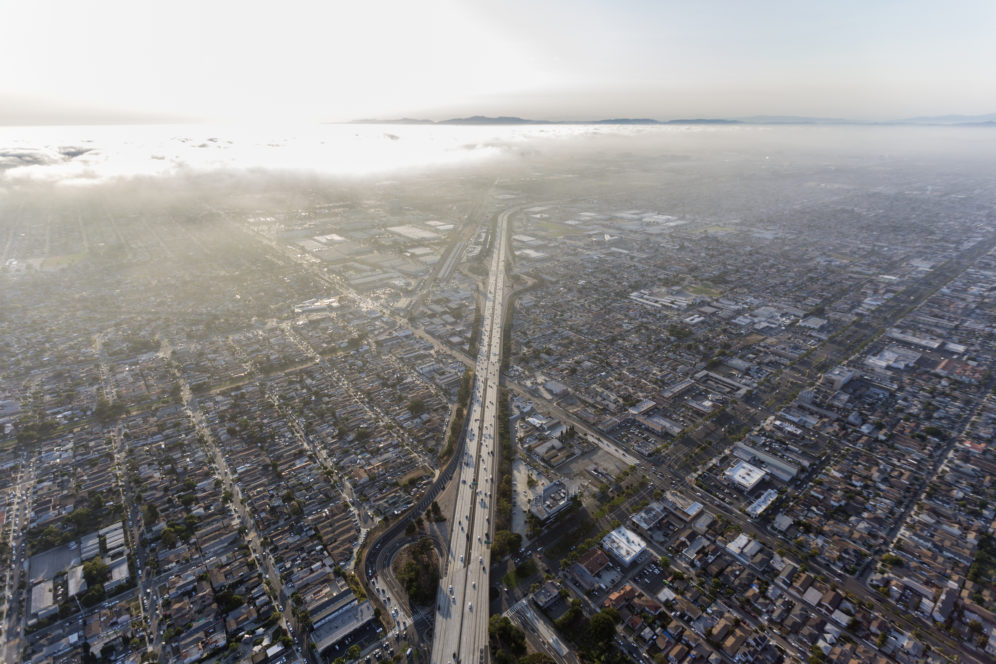
April 02, 2021
Leapfrogging Past the Urban Highway
Urban highways are obsolete technology. By investing in walking, cycling, and public transit, rapidly developing cities can leapfrog past the outdated urban highway, and skip straight to the future.
High-income cities are paying exorbitant costs to remove the urban highways they built only decades prior, and replace them with walking, cycling, and transit.
Toxic Transport Design
Urban highways are limited-access, multi-lane divided roads in populated areas. They are designed to move motorized traffic over long distances at high speeds. Some urban highways run through city centers while others encircle the urban core. Urban highways were the peak of transportation design in the 1950s, but today they are as obsolete as floppy discs. Walking, cycling, and public transit are more sustainable, safe, healthy, efficient, and productive than urban highways. Sustainable mobility is the future of transportation.
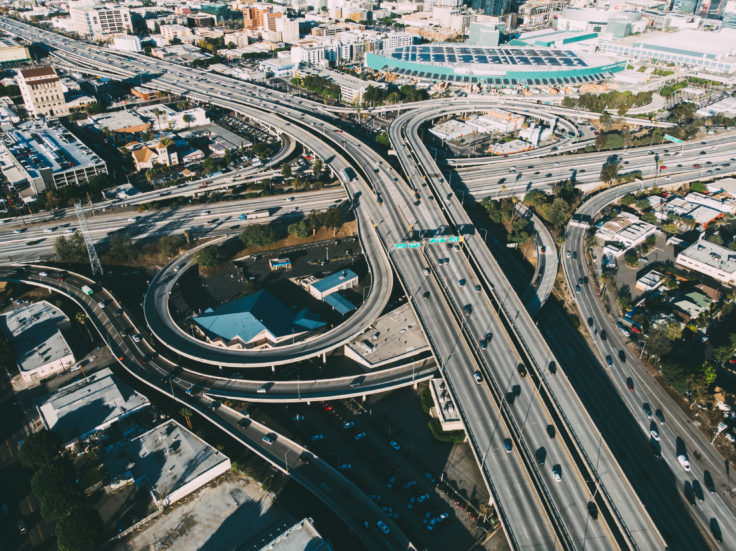
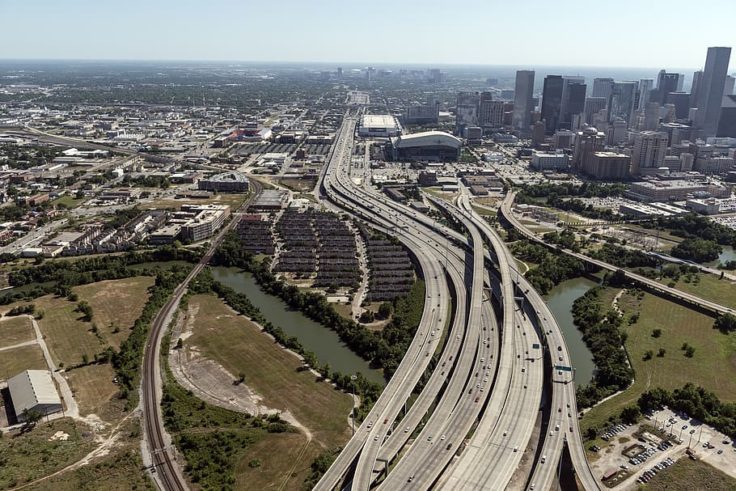
Two massive highways, in Southern California and Texas, do not provide safer or more equitable access to goods or services for residents.
Urban highways are not just obsolete: they’re toxic. They are bad for both people and the planet. They displace people, dividing communities and deepening segregation by cutting off walkable networks that people use to get around. In this way, urban highways sacrifice livable neighborhoods to facilitate car traffic. Urban highways lead to growth that is ecologically and financially unsustainable. They subsidize sprawling development that destroys agricultural land and natural habitat. Highways encourage people to drive, making air pollution and climate change worse. Proponents of urban highways argue that they relieve congestion, reduce travel times, and even decrease emissions. But urban highways cause the induced demand phenomenon, which encourages more people to drive. A few years after a highway opens, congestion, pollution, and the other harmful impacts of driving become worse and the anticipated benefits do not materialize. The harmful impacts of urban highways are so clear that most cities in high-income countries have stopped building them. Cities like Seoul, Paris, New York City, San Francisco, Utrecht, and Milwaukee have begun demolishing urban highways. While costly, this results in healthier, more livable communities. Not all high-income cities made the mistake of building urban highways in the 20th century. Vancouver—the only major North American city with no urban highways in the city center—invested its resources in walking, bicycling, transit, and transit-oriented development. Not coincidentally, Vancouver routinely tops quality of life rankings for the continent.

Repeating Past Mistakes
Even as high-income countries tear out urban highways, many lower- and middle-income countries continue to build them. These projects are usually funded by local and national governments, but sometimes by bilateral and multilateral development banks. Ironically, these multilateral banks are often funded by high-income countries that have stopped building urban highways in their own cities. The argument for building these highways is the same as it was 50 years ago: to reduce congestion. But with the data we have now, we know that this never happens.
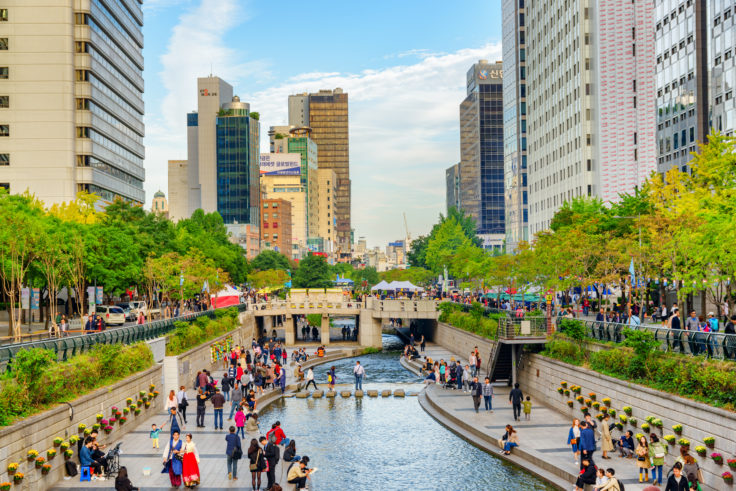
Leaving Highways Behind
Countries around the world are facing an economic recession in the wake of COVID-19. Many governments will pursue stimulus programs that fund infrastructure to jump-start growth. But countries that spend stimulus funding on highways will only saddle themselves with toxic, obsolete infrastructure. COVID-19-related stimulus funding should be spent on innovative sustainable technologies like citywide cycling networks instead of inefficient highways. At the time of writing, hundreds of cities have rapidly expanded their bicycle networks while other cities are expediting plans to expand protected cycle-lane networks. To provide a sustainable and efficient recovery from COVID-19, cities should make these improvements permanent. Multilateral and bilateral development banks and other financing corporations have a role to play by funding sustainable mobility instead of toxic highway projects.
Education and awareness about leapfrogging will be key to enabling financial institutions and governments to pursue sustainable transportation. Leapfrogging to sustainable urban mobility is possible. In the mid-1990s, the city of Bogotá was growing fast and had to decide how to expand its transportation system. The Japanese International Cooperation Agency offered financing for a system of urban highways, but the city opted instead for a mobility strategy that included a now internationally renowned bus rapid transit (BRT) system. This BRT now carries over 1.8 million people a day, more people than the proposed highways would have, at a fraction of the construction cost. The city also invested in a bike share system and a 45-kilometer greenway connecting low- income neighborhoods to the city center.
High-income cities are paying exorbitant costs to remove urban highways they built only decades ago and replace them with the cutting-edge transportation technologies of walking, cycling, and transit. We can learn from their mistakes. Low- and middle-income cities have an opportunity to leapfrog past toxic urban highways to the sustainable transport of the future.


